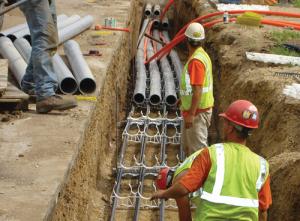2020’s Lessons on Grid Hardening
Mike Beehler has nearly forty years of electric T&D experience at Tucson Electric Power, Hawaiian Electric Co., and Burns & McDonnell. He is a civil/structural engineer and registered professional engineer in eight states. He is founding member and Chief Opportunity Officer of Mike Beehler & Associates, LLC and serves as National Spokesman for the Power Delivery Intelligence Initiative, www.pdi2.org/. Beehler is a Fellow in ASCE and Member of IEEE and CIGRE.
Even working within the most ideal conditions, operating a safe, reliable, affordable, and sustainable electric utility is a challenging task. Unfortunately, 2020 has been anything but ideal. A global pandemic, supply chain disruptions, massive fires in the west, and a significant increase in severe weather are just a few of the challenges utilities have faced and are still facing. This year has forced us to learn some hard lessons and ask important questions about the future of resiliency and hardening North America's electrical grid.
Utilities Prepare to Handle Multiple/Concurrent Crises

Utilities are no strangers to preparing for and responding to emergencies. However, decades of experience could not have prepared us for multiple and concurrent crises. With COVID-19 promptly followed by annual weather events and devastating fires, many utilities find themselves confronting a new crisis before having time to fully address the previous one. This Black Swan event has strained resources in ways that few would have predicted.
The historic effects of COVID-19 have had widespread implications on utilities usually well-prepared for and accustomed to crisis management:

